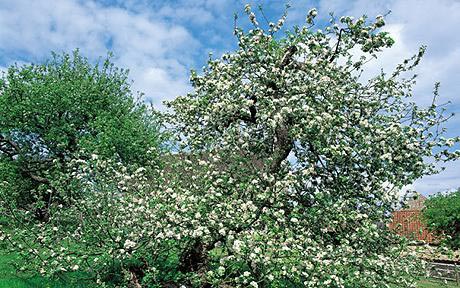Newton's apple tree is about to die
Thousands of ancient trees in the UK, including apple trees attached to the fascinating law of the universe of genius scientist Isaac Newton, are dying due to environmental pollution, urban development and climate change. .
The National Trust - the organization that preserves natural, architectural and historical heritage in the United Kingdom - said that the country of mist owns some of the world's most famous ancient trees. They grow in ancient castles, national parks and even in people's houses.
However, the use of chemicals in agricultural production, soil erosion, pollution in urban areas, global warming can kill famous old trees if people do not quickly launch to save them.
Among the most famous trees in the fog facing the danger of extinction are nearly 350-year-old apple trees at Woolsthorpe estate, Lincolnshire county. It is rumored that genius scientist Isaac Newton invented the law of universal gravitation after seeing an apple from this tree fall to the ground in 1665. There is also a 2,000-year-old yew tree in Berkshire County and a few hundred years old sycamore in Dorset.

Apple tree in Woolsthorpe estate, Lincolnshire county, England.Isaac Newton's genius science developed the law of universal gravitation after seeing an apple fall from this tree.Currently it has been nearly 350 years old.(Photo: Telegraph)
The National Trust has appointed an expert responsible for ensuring the lives of famous ancient trees by protecting the environment around them. They also planted many new trees near old or dying trees.
" All famous old trees face the threat of pesticides and fertilizers. The use of widespread chemicals makes their environment seriously polluted. Smoke and dust from airports and roads, soil erosion also increases the risk of tree death , "said Brian Muelaner, a perennial tree expert at National Trust.
According to Muelaner, old trees are not only historically valuable but also the habitats of many birds, insects and lichens. Those species can only survive on perennials.
More and more scientists have expressed concern about the destruction of trees for road construction and home construction. The National Trust said that he had at least 100,000 old trees. In addition to 40,000 trees owned by the National Trust, the remaining trees are almost unknown and protected.
- Ancient apple trees spread out with 10 football fields
- Modern apple tree is a hybrid of at least 4 wild apples
- The world's first yellow fleshed apple apple
- Apple tree is poisonous with 50 different apple varieties on 1 tree
- The truth about 'Newton's apple tree' 400 years ago
- 250 varieties of apples grow together on a tree
- Apple tree with the best cold-resistant fruit
- Video: Boy and apple tree
- Close up of the magnificent 'spacecraft' of Apple's 1-0-2
- The oldest tree in England has changed sex after 3,000 years
- Super unique black diamond apple apples, unique Halloween season product
- New headquarters Apple reached the perfect limit of construction
 Is the magnetic North Pole shift dangerous to humanity?
Is the magnetic North Pole shift dangerous to humanity? Washington legalizes the recycling of human bodies into fertilizer
Washington legalizes the recycling of human bodies into fertilizer Lightning stone - the mysterious guest
Lightning stone - the mysterious guest Stunned by the mysterious sunset, strange appearance
Stunned by the mysterious sunset, strange appearance